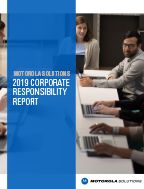Environment
We are focused on addressing the top environmental issues that affect our operations and impact the sustainability of the communities we inhabit.
The Sales Hub is being retired. Please visit The Grand Prix of Sales for the latest sales resources and information sales



Our ESG Framework demonstrates our commitment to operate ethically, protect the environment and help foster safer, more thriving communities.
The Sales Hub is being retired. Please visit The Grand Prix of Sales for the latest sales resources and information sales
Every facet of our business is influenced by our global commitment to corporate social responsibility. Our ESG programs center around six pillars that communicate how we drive meaningful change and make a positive impact for employees, customers, communities and shareholders.

We are focused on addressing the top environmental issues that affect our operations and impact the sustainability of the communities we inhabit.

Our culture of inclusion and equity enables us to pioneer innovative products and solutions for our customers and communities.

We are good citizens by design. The Motorola Solutions Foundation connects employees with organizations to drive meaningful change.

People rely on us for public safety and enterprise security. That is why we prioritize accuracy, equitability, transparency and fairness in
everything we deliver.

We are committed to human rights, supplier diversity, fair labor practices, ethical sourcing and minimal environmental impact throughout
our supply chain.

From ethics to business conduct and government affairs, corporate governance and compliance are core to our integrity and enabling transparency for
our stakeholders.
What gets measured gets done. We strive to provide detailed reporting to show how we did, where we are now and where we are headed. We believe there’s always room to adapt, evolve and push the boundaries in what’s possible.
We are driven by our conviction that everyone should not only feel safe but be safe. It underscores our continued focus on safety and security. Our 2023 corporate responsibility report demonstrates our commitment to solving for safer communities, safer schools and safer businesses.
READ THE REPORTOur Investor Relations page provides our financial statements, corporate filings and details on our corporate governance structure.
Learn moreOur TCFD report addresses our governance, strategy, risk management, metrics and targets, and information about our business in the face of the long-term challenges of climate change.
Read the report





Please wait...
Please wait...